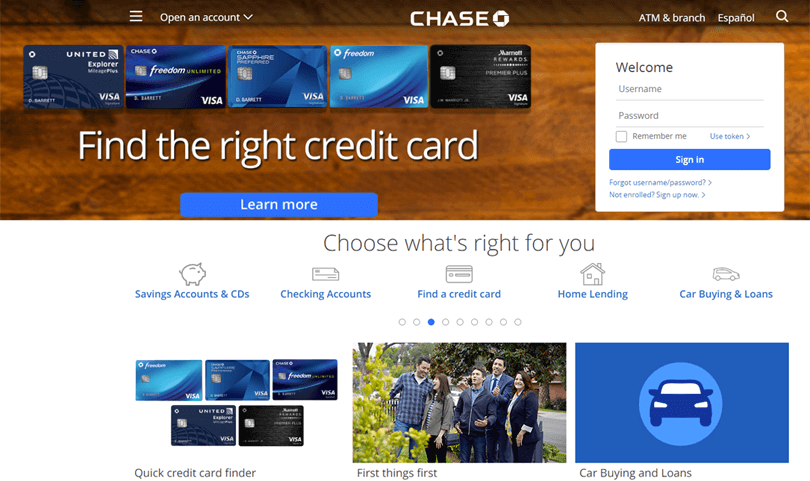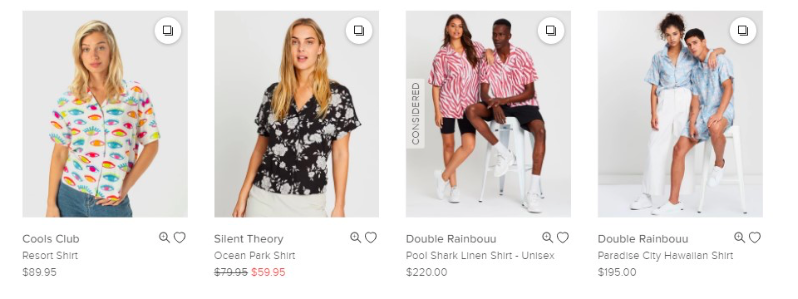How To Get Better Conversion Rates From Your Ecommerce Website – Tips For Success
Ecommerce is not just an emerging industry anymore – it is one of the biggest industries experiencing massive growth as businesses around the world leverage tap into the vast potential of building optimized websites that allow them to increase online sales.
With the national market value set to cross $25 AUD billion by 2021, Australia is a flourishing market for eCommerce websites. Combined with the increasing number of smartphone users that are bound to cross 18 million people by 2020 – it’s no wonder that many businesses have invested in setting up a website.
Whether you’re just starting out with eCommerce or a part of a large eCommerce organization’s marketing team, your website should be a conversion generating tool. The hallmark of a successful website is that it entices visitors and leads to increasing conversions.
Before we get into why conversions are important, let’s start of by understanding what does conversion mean:
What Are Conversion Rates
Simply put, conversion rates are the percentage of visitors that come to your website and perform the desired action, such as making a purchase or subscribing to your newsletter.
Although buying is the most important conversion, it’s not the only one. Visitors interact with your website in a number of ways that count towards your organizational growth.
Here are a few note-worthy conversions:
- Number of comments and reviews
- People starting an online chat with your business
- Sharing content from your website
- Participating in a survey or poll
- Subscribing to you (email opt-ins)
- Direct messages
- Wish-listing items for later
- Downloading your website’s content (eBooks, white papers, etc.)
The higher the conversion, the optimized your website. A successful website is one that engages the user, educates them on your offering and caters to their pain points – resulting in a successful conversion.
Conversion Rate Calculations
To calculate a conversion rate, simply divide the number of conversions (e.g., people that performed the desired action on the web page) by the number of visitors to your website’s landing page and multiply it by 100. The number of conversions and visitors need to be in the same time frame.
For instance, if you get 4000 visits in January and only 50 visitors completed the desired action, it means you a conversion rate of 50/4000 * 100 = 1.25%.
Different Types Of Conversion Rates
Depending on your marketing goals, you can use different conversion rates to evaluate how well your website is performing:
- Landing Page Conversion Rate: How effectively your landing pages convert visitors. The top 10% of landing pages across industries have a landing page conversion of 11.45%, or even higher.
- Campaign Conversion Rate: How effective was a particular campaign in converting new visitors into customers
- Marketing channel conversion rates: Used in measuring the effectiveness of Facebook or Google Ads for conversions
- Keyword Conversion Rates: How much traffic do you experience through your keywords
- Ad Conversion Rate: For evaluating how the content and ad copy performed
- Overall Conversion Rate: How effective is your website in converting traffic coming in from different sources, organic and paid
CRO Tools to Measure Conversion Rates
Digital marketing advancements have led to sophisticated conversion rate optimization (CRO) tools that allow us to track highly specific conversions.
Let’s take a look at 5 of the popular CRO tools:
- Google Analytics: For a holistic view of your conversion rates and other site analytics
- HotJar: Helps you see how users interact with your website through heat-mapping (clicks, cursor movement, scrolling depth)
- Optimizely: Helps you in A/B testing your website components such as CTAs and colour schemes to see which resonates better with your target audience
- Five Second Test: Get first impressions about your website design, speed, and effectiveness from real visitors.
- Formisimo: Get an in-depth insight into your forms with this analysis tool. See where users are dropping off and the time it takes for certain form fields.
Tips To Get Better Conversion Rates From Your Website
With the eCommerce market penetration set to pass 85% of the population, approximately 22 million people in Australia will be buying online.
Such an increased demand will inevitably saturate the market. In order to reap success, website owners must look to optimize conversions by designing and developing their site in a way that is completely aligned with consumer expectations.
Without further ado, let’s discuss ways how you can increase your website’s conversion rates:
Remove Distractions
Your landing page is a visitor’s pathway to making a purchase. If you overcomplicate things and make it confusing for a visitor to buy, the only thing that will increase will be your bounce rates.
Bounce rates show how many people decided to click off a landing page after being directed to it via search engine results. Simply put, your landing page needs to be direct and to the point.
It’s fascinating seeing how many popular brands make the mistake of complicating their landing page, leading to increased bounce rates.

Take this example of Chase credit cards. They want you to find the best credit card for your needs on the left side, while they have a login screen at the right side of the page for existing customers.
To add to the visitor’s confusion, they have a similarly designed call-to-action button for both login screen and learn more (about credit cards).
Ideally, a landing page should be intuitive and without any distractions, so the user instinctively knows where to go. Don’t have too many conflicting CTAs for your landing pages that may confuse visitors. Instead, opt for a hierarchical structure that takes them to the appropriate offerings.
Simpler Is Better
For eCommerce websites, it’s always important to have a website structure that incorporates a sales funnel. Create a structure that has no more than 3 levels.
The home page is at the top of the hierarchy. Next up, distribute the pages into different categories that inform visitors. Follow that up with subcategories that pique their interest and lead them to different products within those categories.

For instance, Amazon has a different category for each category of products they sell and have subcategories, further making it easy and intuitive for visitors to find what they need.
And that’s just the sidebar menu; they also have the option to browse by category directly from their home page.
Plus, they’ve listed the best products for the most popular categories on their home page so users can easily find products that others have bought recently.
While you may not be as successful as Amazon right now, but allowing your website to be more intuitive for users can surely put you on the road to successful conversions.
Get Some Buzz Going
According to the Search Engine Journal, 77% of online buyers take online reviews into consideration when they make their buying decision. 44% of women believe that customer reviews are the biggest influence when making a decision about a brand, followed by referrals from friends.
You may have a collection of the best products in the world, but if people don’t know about your products, they won’t sell. And when it comes to effective marketing, reviews are the most trusted form of social proof for your products. This is exactly why you need that to showcase social proof to attract potential consumers.
Glowing reviews from customers and influencers displayed on your website can help you gain traction. Delighted customers can help improve your reputation through word-of-mouth marketing. Even bad reviews are helpful as they help you identify gaps and issues where you can improve for your customers.
Professional Product Photography
When it comes to eCommerce, product photography is a must-have. The only thing better than telling consumers what they are going to get is to show them.
However, unprofessional photography can do more harm than good and actually contribute to creating mistrust about the quality of your product.
A professionally photographed image of items you’ll sell gives your website credibility in the eyes of the visitors. There are many websites catering to the millions of online consumers in Australia, and you need to set yourself apart.

Take this example of professional photography at The Iconic. It shows real products professionally photographed to show how they will look once you buy them. Product photography like this helps build trust with your audience, establishing your credibility.
Chat Software For The Win
Chat software adds an element of personalization to your website. Customers are there to buy from you, and having chat software allows you to address customers’ immediate concerns. It allows customers to voice their concerns and get the exact product that they need.
Add your service hours and an automated message to respond back in 24 hours, so potential and existing customers know that you do make an effort to solve their problems.
Use Web Copy To Address Consumer Problems
Visitors have short attention spans, and you need to have a clear CTA that gives them an actionable solution for their problems.
If you want to be a problem solver for your visitors, have a clear value proposition stated on your website’s home page that tells your visitors what you do better than others. On your landing page, highlight the benefits of the product you’re selling and address customer pain points that the product rectifies so it reinforces why the visitor is buying that product.
Lastly, drive your visitors to action by having a clear and effective call to action button without cluttering up the page with irrelevant or distracting information.
Optimize Checkouts and Stop Abandoned Carts
For an eCommerce website, the checkout process is crucial. People may add products to the cart and abandon them at the last minute. In fact, there are statistics showing that cart abandonment is a real issue:
- 61% left a transaction due to extra shipping fees
- 27% abandoned their carts because of a complex checkout process
- Slow-loading websites increase abandonment by 75% and decrease loyalty by 50%
- Forced account creation at the time of checkout caused 35% of transactions to drop
To make sure what’s in the cart gets bought, you can make the following changes to your website:
- Incorporate Free Shipping: It can affect pricing and cause the customer to look elsewhere for products when you don’t have free shipping. It’s an absolute must-have.
- Allow Guest Checkouts: Many websites try to increase their customer base by having new customers create an account at checkout. It’s counterintuitive and complicates the checkout process unnecessarily as the customer has to go through a lengthy process. Avoid losing a sale by having guest checkouts for your customers.
- Use Abandoned Cart Software: The software picks up items that were left in the shopping cart by customers and sends follow up emails to know what went wrong. You can even give discount codes for products if pricing was the cause of abandonment
- Speed Up Your Site: Use content delivery networks, compress your pages, specify image sizes for image placeholders and Google’s Page Speed Insights to monitor your website speeds and rectify errors that drive visitors away
Make sure the checkout process is smooth and effortless for both new and existing buyers. For people who chose to create an account, offer a one-click “buy now” option that provides greater convenience for them. Convenience leads to greater conversions.
Conclusion
No one knows your business better than you, but in order to get high conversion rates from your business website, you need to optimize it correctly. Hopefully, you will be able to get better conversions from your eCommerce website to help your business flourish. If you have any questions or comments, feel free to let me know.
